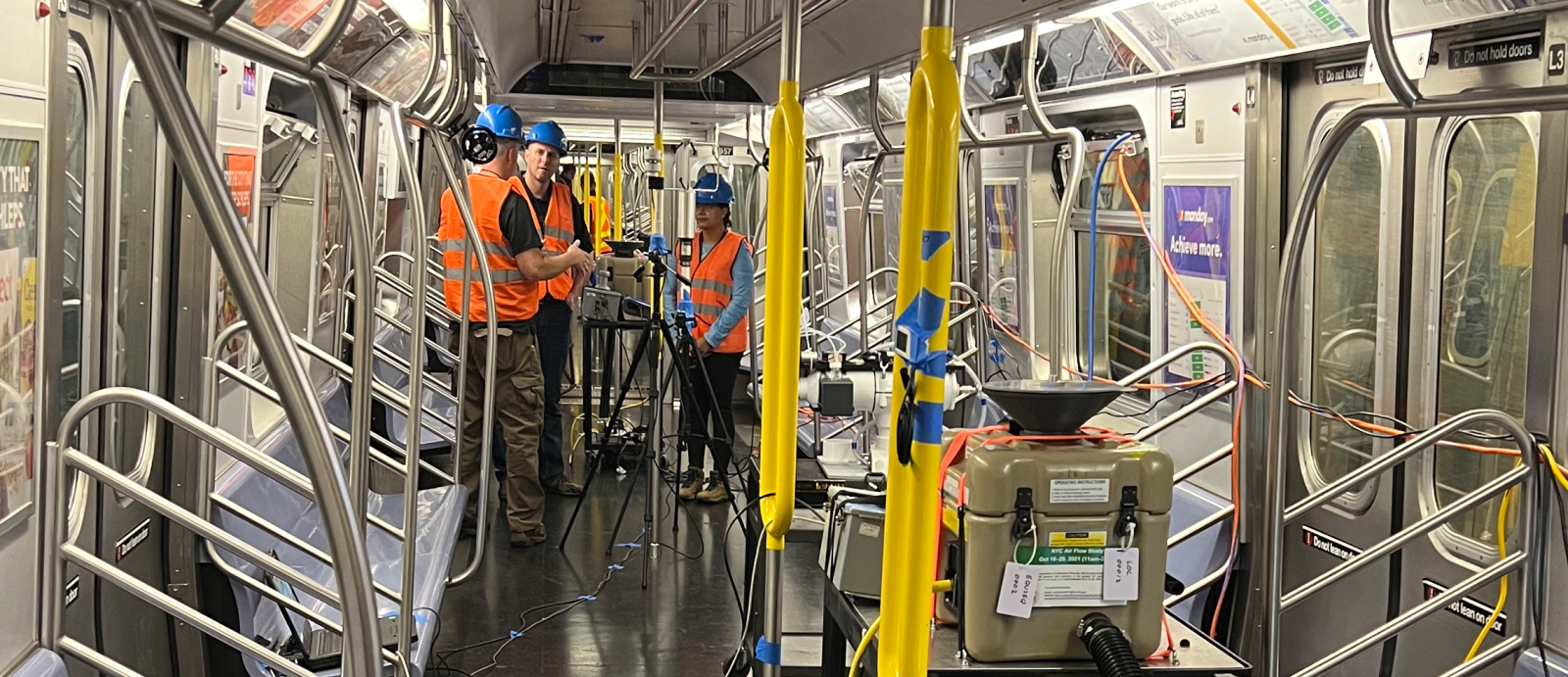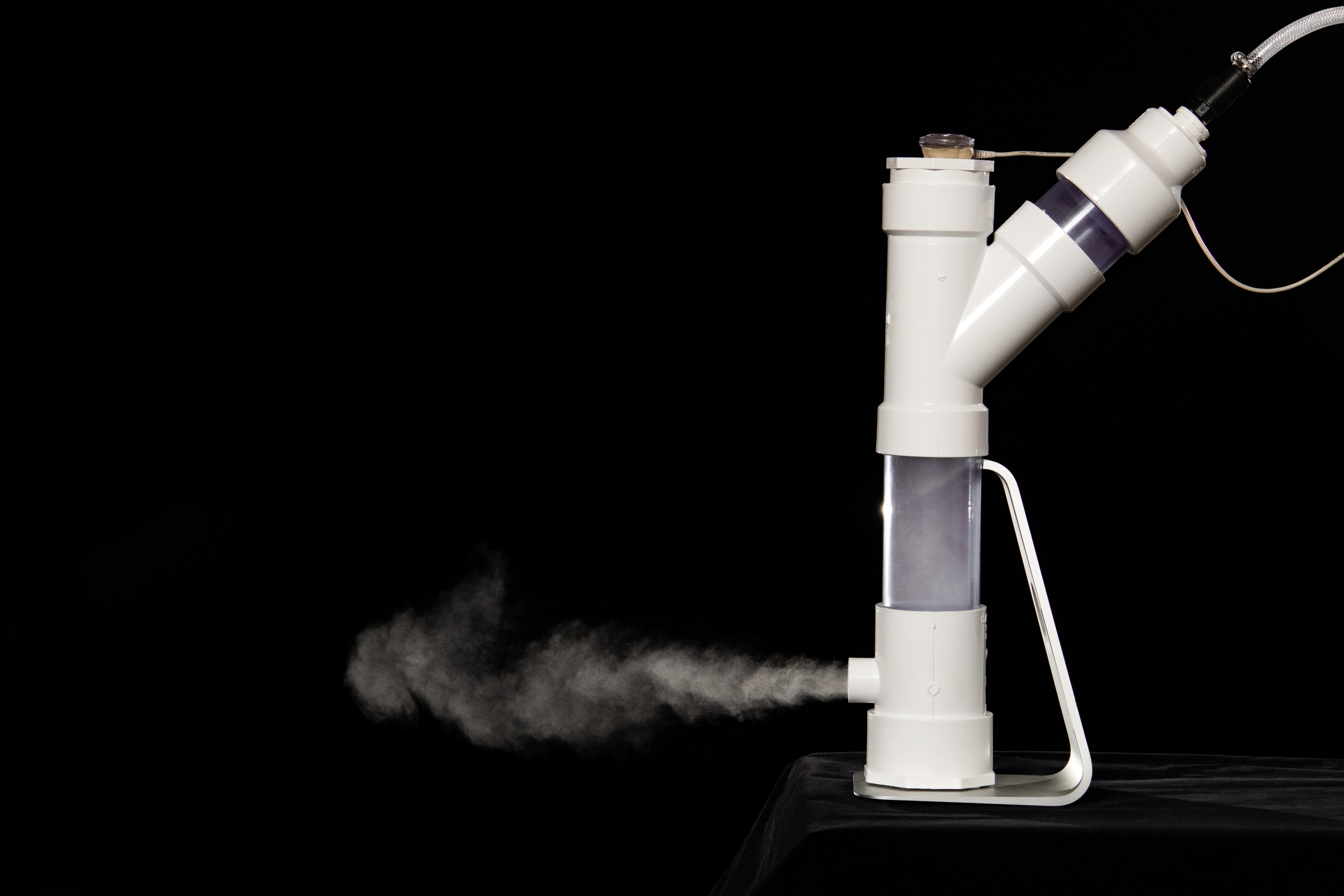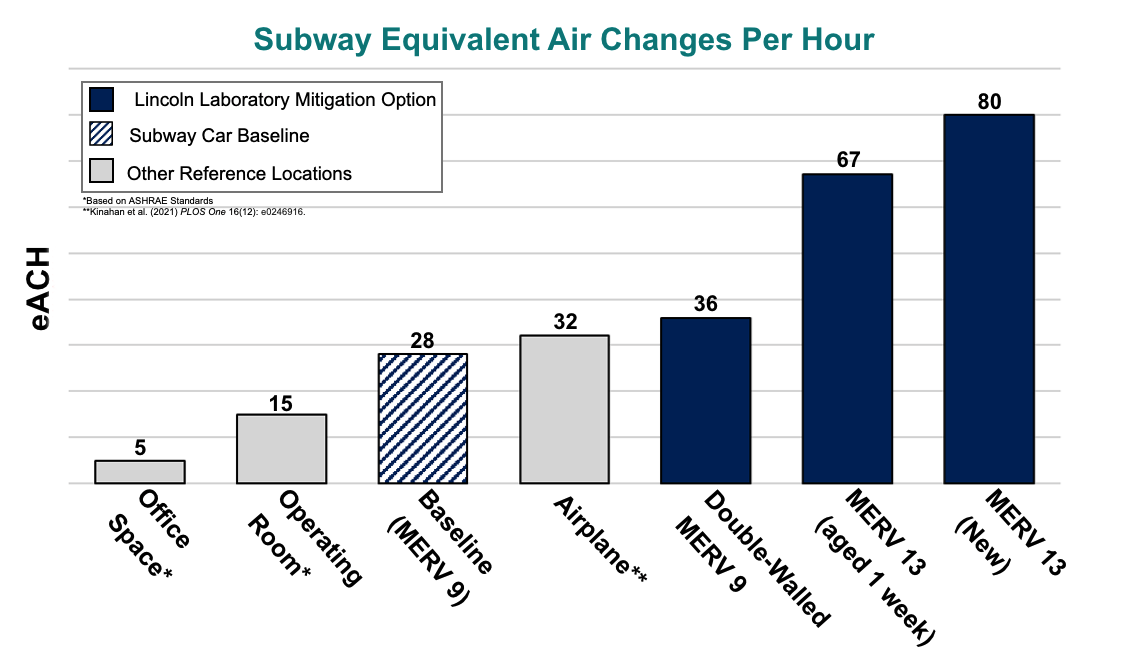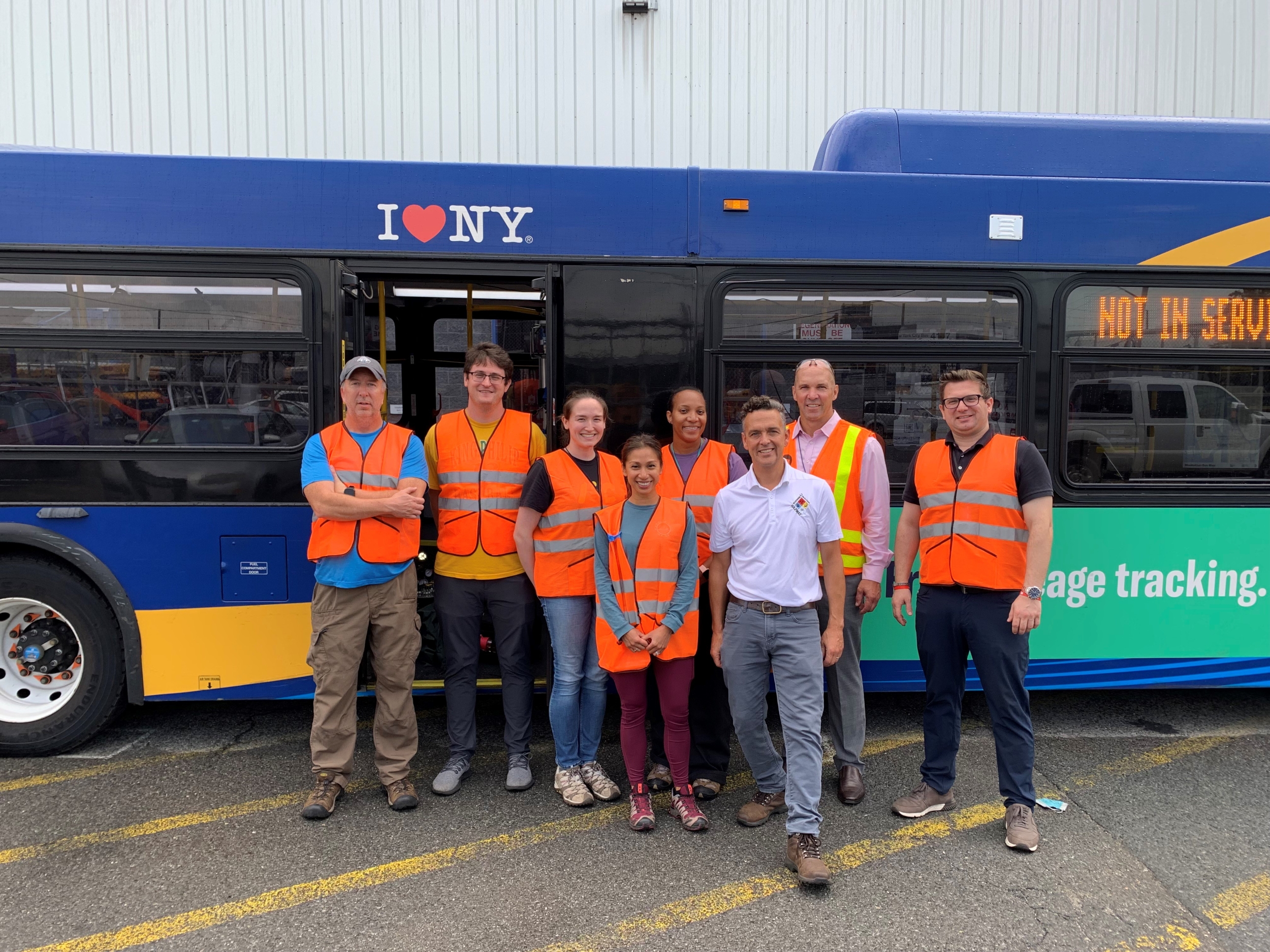
Simulated COVID-19 spread informs NYC public transit protocols
When COVID-19 hit the nation in 2020, much was unknown about its impact and its spread. One unknown was how safe it was to use public transportation — what was the risk of getting infected and what mitigations could be put in place? At the time, public transit authorities had little information to work with to develop best practices. To search for these answers, the New York Metropolitan Transportation Authority (MTA) approached MIT Lincoln Laboratory and the Department of Homeland Security Science and Technology Directorate (DHS S&T) for help, as the three organizations have a long-standing relationship in developing systems to improve public security. Together they then established the Viral Phenomenology and Mitigation Testing project.
"In the early days of the pandemic there was very little quantitative, science-based guidance about what to do to mitigate spread and keep people safe," says Meghan Ramsey, who is a technical staff member in the Laboratory's Counter–Weapons of Mass Destruction (WMD) Systems Group and part of the project team. "The study grew out of the need to collect actual measurements on air exchange rates, how particles move in transit systems, and the effectiveness of mitigation actions. Those parameters didn't exist at the time."
For the project, the Laboratory team developed a safe, non-toxic viral simulant of the COVID-19 virus's physical attributes and the method by which it is spread — through respiratory aerosols and droplets released via coughing and breathing—as well as a method to track the simulant through the complex environment of a public transit vehicle. They then dispersed the simulant through transit buses, a subway car, and a commuter rail train car, tweaking different parameters such as opening and closing windows and doors, and changing air filter types or modes of operation.
"We used sub-micron-sized silica particles to mimic the viral particles, salt to mimic the salinity of saliva and mucus, a fluorescent dye that could be tracked with real-time sensors, and DNA barcodes," says Janice Crager, who is also from the Counter–WMD Systems Group and a project team member. "The DNA barcodes were detected using qPCR and enabled our measurements to be quantitative, specific, and highly sensitive. They were also used to increase the efficiency of the data collection process, as using different barcodes for each test allowed us to discriminate simulant released from one test versus another without spending time cleaning the vehicle in between tests. This way we were able to evaluate more mitigation methods within our testing time frame."
In addition to simulating the COVID-19 virus in respiratory secretions, the team also built a dissemination device that mimicked coughing and normal breathing to release the simulant in a realistic way.

To collect their data, the team set up a suite of sensors and sampling units throughout the transit vehicles that varied in sampling rate and collected different types of data, such as the amount of simulant in the air at different locations over time. Additionally, they swabbed various surfaces to determine whether and how much of the simulant settled on different areas and collected meteorological data such as temperature and relative humidity.
"Collecting air and surface samples at various distances from the origin helped us understand how the simulant spread within the vehicle," Crager says. "These data helped answer questions such as 'how long does it take the aerosolized simulant to spread throughout the vehicle?' 'Does its concentration decay with distance, and if so, by how much?' 'Does the simulant reach the driver?' 'And where and how much of the simulant lands on surfaces?'"
Using their data, the team calculated two different metrics. The first metric was the number of times per hour that the air inside a transit vehicle was completely replaced with fresh air (ACH, or air changes per hour) or with a mixture of fresh air and filtered air (eACH). The second metric was the vehicle occupant exposure level to the simulant. One particular result indicated that using electrostatically charged filters with a minimum efficiency reporting value (MERV) of 13 substantially increased the eACH compared to the filters being used at the time. The higher the air exchange rate the less time aerosolized viral particles would remain within the vehicle, thereby reducing the risk of exposure.
"We also found that transit vehicles have relatively high baseline air exchange rate values compared to other indoor environments like office buildings and hospital rooms," Ramsey says. "This means that normal operating conditions are already conducive to rapidly reducing aerosol concentrations and exposure risk."
The team then conducted a follow-on project to further understand the impact of different filters on COVID-19 spread and exposure and the impact of filters aging over time. At the end of the study, they gave MTA authorities a set of easy-to-implement mitigation recommendations. Using those recommendations, the MTA has already begun changing their filters from MERV 10 to MERV 13 in certain bus models.

"As a result of DHS S&T and MIT Lincoln Laboratory's quick response during a time of need, the MTA was able to improve the air in our rolling stock by increasing filtration and optimizing our HVAC systems," says Michael Gemelli, director of Chemical, Biological, Radiological, and Nuclear / WMD Detection and Mitigation at the New York MTA.
"This collaborative effort will develop actionable data and mitigation options to enhance NYC public transit rider and worker safety, and complement work under way by the United States Environmental Protection Agency to examine the efficacy of surface disinfectants for subway cars and buses," says Andrea Wiggins, manager of the Chemical Biological Detection and Defense Office of Mission and Capability Support at the DHS S&T. "The study methods, outcomes, and lessons learned may also be further leveraged by other major mass transit systems to ensure the health and safety of transit passengers and workers, along with informing public health guidance and concepts of operation for transit environments."
This project is one of many that the Laboratory has conducted on the subject of mapping the spread of potential airborne threats through different locations. For this project, although the results were framed in the context of COVID-19 and NYC transit systems, the team has the ability to adapt their test for other biological or chemical threats across a range of different real-world environments of interest.

Ramsey says the communication and collaboration between their team and the MTA in terms of working odd hours and making vehicles accessible was instrumental to the study's success. "The project started during the height of the pandemic with a very rapid timeline, when everyone was socially distanced, before vaccines were available, and when many key questions were still unanswered. It was a moment of real need that we were addressing."
For inquiries on this project, or for working with the Laboratory on disease spread in other locations, contact Anne McGovern.
